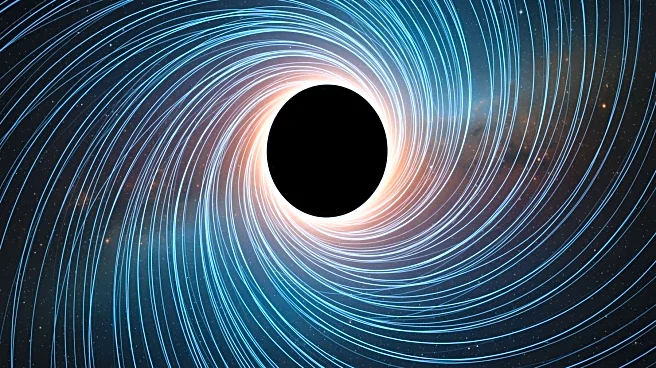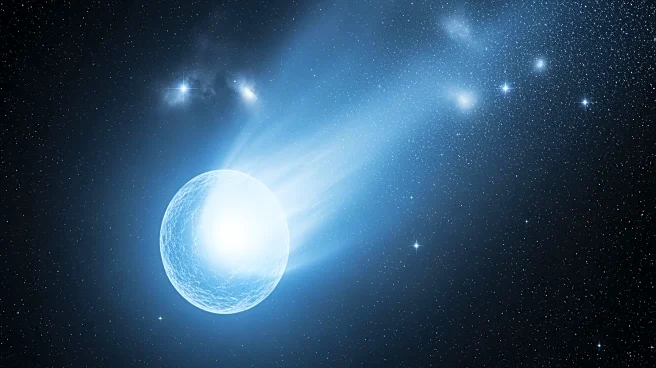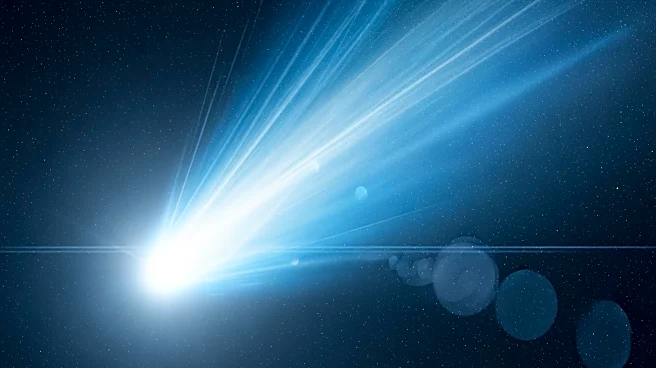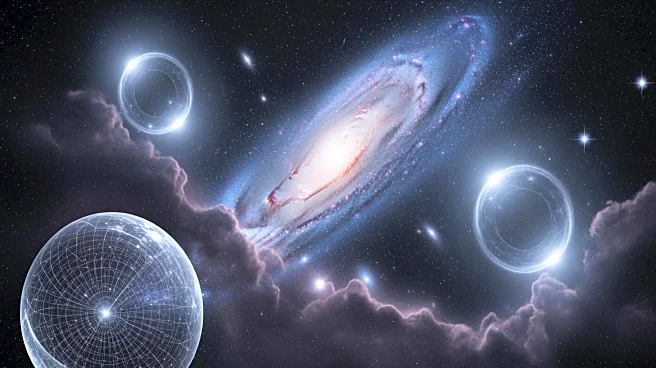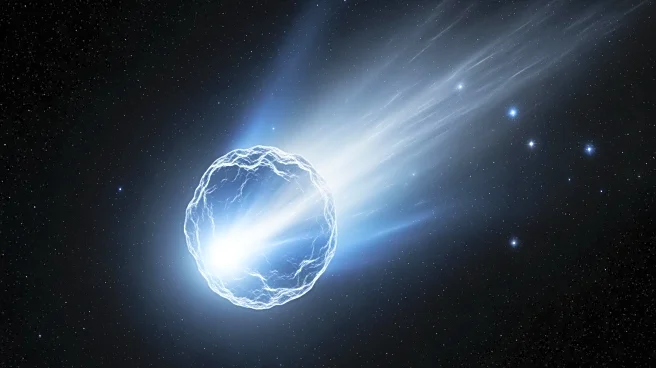What's Happening?
The James Webb Space Telescope has identified an actively growing supermassive black hole within a galaxy formed just 570 million years after the Big Bang. This discovery challenges existing theories about galaxy and black hole formation in the early
Universe. The galaxy, named CANUCS-LRD-z8.6, is part of a class of small, distant galaxies known as Little Red Dots. Webb's Near-Infrared Spectrograph (NIRSpec) enabled researchers to detect key spectral features indicating the presence of an accreting black hole. The black hole's rapid growth and large mass relative to its host galaxy defy conventional understanding, suggesting that black holes may have grown faster than their host galaxies in the early Universe.
Why It's Important?
The discovery of a rapidly growing supermassive black hole in the early Universe by the James Webb Space Telescope is significant for astrophysics. It challenges existing theories about the formation and evolution of galaxies and black holes, suggesting that black holes may have developed at an accelerated pace compared to their host galaxies. This finding opens new avenues for research into the dynamics of early Universe formation and the relationship between black holes and galaxies. Understanding these processes can provide insights into the evolution of cosmic structures and the fundamental forces shaping the Universe.




